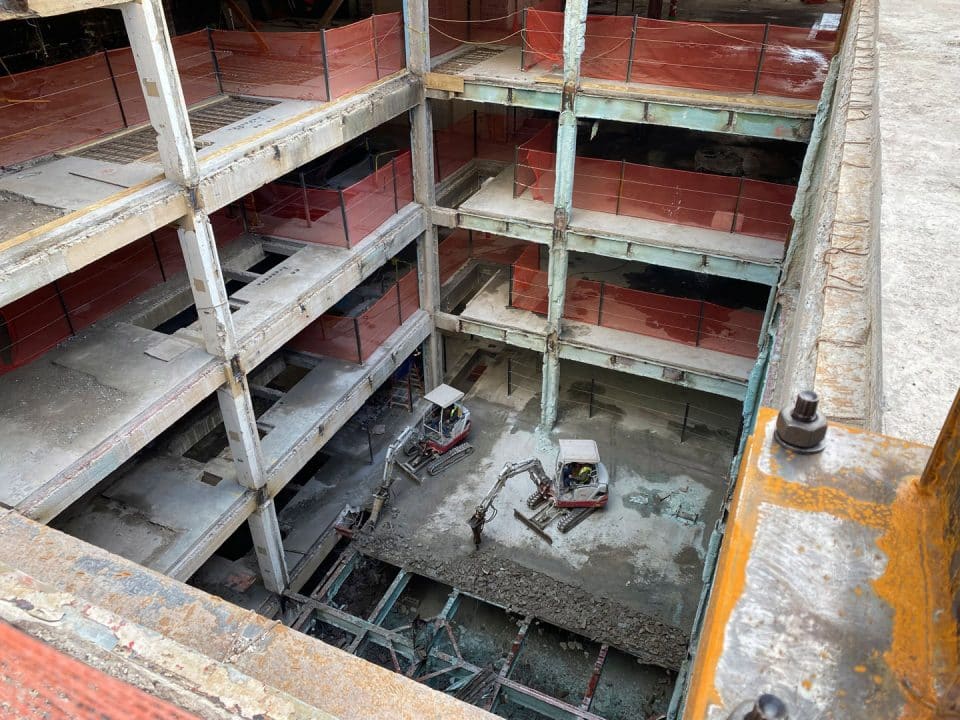
A Narrow Path
Repurposing office buildings to housing has been one of real estate’s hottest topics in recent years. It’s little wonder. In the four years since the beginning of the COVID-19 pandemic, vacancies in office buildings reached record levels and an increasing shortage of housing has plagued parts of the country. Consider two data points:
- 19.6% of U.S. office space sat empty in the fourth quarter 2023, the highest vacancy rate since at least 1979, according to Moody’s Analytics.
- America faces a shortfall of millions of affordable housing units, which Fannie Mae pegs at 4.4 million in the top 75 U.S. metros.
So, it comes as no surprise that folks have latched onto what seems an elegant way to solve two problems at once: Repurpose underused office buildings into apartments. Such office-to-housing conversions may even help address yet a third problem: Luring people back to central cities suffering from a dearth of office workers in the post-pandemic era. “Rise in Office Conversions May Help to Reinvigorate Cities,” read the headline of a recent study by the big commercial brokerage CBRE.
To be fair, this report, academic research and countless news stories don’t ignore an obstacle course that can impede repurposing office buildings. The first wall to climb is the physical characteristics of many office towers, particularly those built after World War II, which may have floors that approach the size of football fields, making them overly expensive to carve into living spaces with windows, bathrooms and kitchens. The only way to remake some of the biggest ones is to drill a core in the middle to provide enough air and natural light, jacking up costs.
Potential problems include not only troublesome office tower layouts, but whether changes are needed to city zoning and building codes and whether a building’s price is low enough (think cheap) and its vacancy high enough (empty, or nearly so) to make a conversion pencil out. Many prospects are simply financially infeasible without tax credits and other government incentives, especially if it includes an affordable housing component, according to researchers and developers.
“Not every building is the best fit, and certainly not every developer is the best fit,” said Steve Atkins, a Jacksonville developer who spearheaded the 2019 conversion of the historic and empty Barnett Bank building in Jacksonville to 107 apartments. “It’s a matter of the stars aligning and the right people working on the right project.”
Developers have repurposed old offices and loft buildings for many decades. “There’s nothing new about it, honestly,” said Steven Paynter, who specializes in adaptive reuse projects for the global architecture firm Gensler. He once lived in a converted British cigarette factory in Newcastle, England.
What seems new this time and may portend more adaptive-and-reuse projects is this moment we live — a post-pandemic era when some cityscapes are pockmarked by dead zones and many office building prices have fallen sharply. Analysts said this reflects a shift to remote and hybrid programs that allow employees to work onsite only part of the time. Some real estate experts predict a swath of mostly older office properties may become obsolete, particularly those lacking the latest technology, energy efficiency and glitzy amenities demanded by tenants to lure in workers. The office woes are a major challenge for cities and property owners but may present an opportunity for a developer who decides to walk the narrow path and carefully select an old office building to repurpose.
“We’re a fan of them,” said Brian Steinwurtzel, co-CEO of GFP Real Estate, one of New York City’s largest landlords. GFP’s three office conversion projects include repurposing Manhattan’s iconic Flatiron building into luxury condos and turning JPMorgan Chase’s old headquarters into 1,300 apartments.
Look at the numbers
Reports from commercial real estate research firms show an increase in office conversions in 2023. CBRE analyzed the office market in 40 U.S. cities and found roughly 100 such projects were slated for completion or were underway in 2023. Nearly half were conversions to multifamily housing, with others to life science, industrial, mixed and other uses. CBRE said as of the third quarter 2023 the number seemed on track to far outpace the annual average of roughly 40 office conversions between 2016 and 2022 (Figure 1). Another 201 office conversions are underway, planned or expected for completion in 2024-2026.
Source: CBRE Research, 3Q2023
Converting old buildings to other uses isn’t the only way to take a pulse of the trend. Yardi Matrix measures by the number of buildings being converted to multifamily residences from other uses, including office buildings, hotels, schools and factories. All told, office conversions represent 38% of the roughly 147,000 apartments created by adaptive reuse projects in 2023 (Figure 2), according to a RentCafe analysis of Yardi Matrix data.
Source: Yardi Matrix
No one is predicting such projects on their own can fix the glut of office space, much less the housing shortage plaguing many big cities. For context, the 60 million square feet of office conversions in the pipeline CBRE tracks represents just 1.4% of the total U.S. office inventory. “Conversions offer one solution, but they will not resolve the challenges facing the office market on their own,” said Julie Whelan, the global head of occupier research for CBRE. The trend may not become truly large scale anytime soon, but she and other market observers said an increase in office conversions can make a difference in many markets and may payoff for those developers and landlords who find the ripest candidates.
“Certainly, the universe of these obsolete buildings is large and growing — at least on the margin,” according to a 2023 report from the Urban Land Institute on the feasibility of converting commercial real estate to housing. “And changes at the margin can have huge impacts on the use of real estate.”
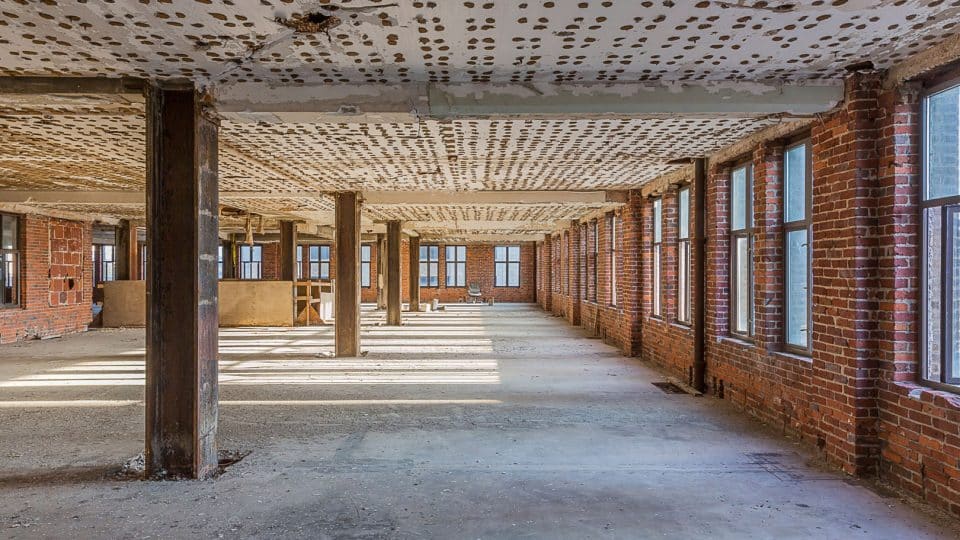
A Good Candidate
The keys to a good office building-to-housing conversion candidate.
Location: Downtowns and midtowns generally have the highest vacancy, best walkability scores, job opportunities and most transit options. Older: Buildings constructed many decades ago are typically cheaper, have smaller floor plates “and they are more charming, which increases their conversion appeal,” wrote the authors of a research study. Quality: Class B and C buildings, which are more likely to face financial distress and obsolescence. Building size and shape: Larger than roughly 50,000 square feet. Smaller buildings lack the scale to attract institutional capital. Rectangular buildings are better than square ones. Floor plate: Generally, 50 to 60 feet from the windows to the inner core is the maximum to avoid costly renovation costs. Occupancy: Buildings with high vacancy and few major long-term leases remaining.
Scope of conversion candidates
One of the key questions is how many office buildings are good candidates to repurpose to apartments. Two recent analyses provide widely varying estimates.
Gensler, the architecture firm, determined that roughly 25% of offices meet its criteria as prime candidates, based on its evaluation of more than 1,000 U.S. and Canadian office buildings. Paynter said the firm developed an algorithm to speed-up assessments to account for a building’s location, shape, floor plate size, window configuration and dozens of other factors.
In contrast, researchers at New York and Columbia universities estimated 11% of office properties nationwide are physically suitable for conversion to apartments, based on an analysis of thousands of office buildings in 105 U.S. markets. The findings appear in a 2023 working paper, “Converting Brown Offices to Green Apartments,” from the National Bureau of Economic Research (NBER). The scholars also determined the location of conversion candidates. Not surprisingly, New York, which has more office space than any other U.S. city, has the most with 615, following by San Francisco, Los Angeles, Washington, D.C., and Chicago. Florida has a total of 109, with nearly half in the Miami-Fort Lauderdale-Pompano Beach metro area.
St. Petersburg, Fla. architect Eddie Mastalerz doesn’t need a fancy algorithm to size up conversion prospects. He determined “within seconds” that all but a handful of the roughly 100 pitches he’s received were not a good fit. So far, his company, ARC3 Architecture, has worked with Tampa-based DeBartolo Development Group on three office-to-housing repurposing projects — in downtown Atlanta, downtown Houston and suburban Houston.
Most interestingly, the NBER researchers dug deep and created an economic model to explore the financial feasibility of converting a hypothetical New York office building into 200 apartments. Considering current office prices, construction costs, rents, taxes and other variables, they calculated an old 250,000-square-foot Class B office building was now valued at $38.9 million, a steep discount from a pre-pandemic value of $100 million. The cheap price reflects higher interest and vacancy rates, and environmental penalties imposed on office buildings under New York’s Local Law 97, which goes into effect this year to curb greenhouse gases. Another key assumption is monthly rents of $7,217 per unit, the going rate for such new luxury apartments in New York, according to the authors. They concluded the project would prove profitable. But all bets are off if the purchase price was much higher or if the conversion requires setting aside units as “affordable.” A customary mandate to provide 20% affordable units would require government incentives such as tax relief or low-interest loans to make the project financially feasible. Separately, the researchers developed an online tool that allows users to enter variables to assess the viability of office conversions in 20 U.S. markets.
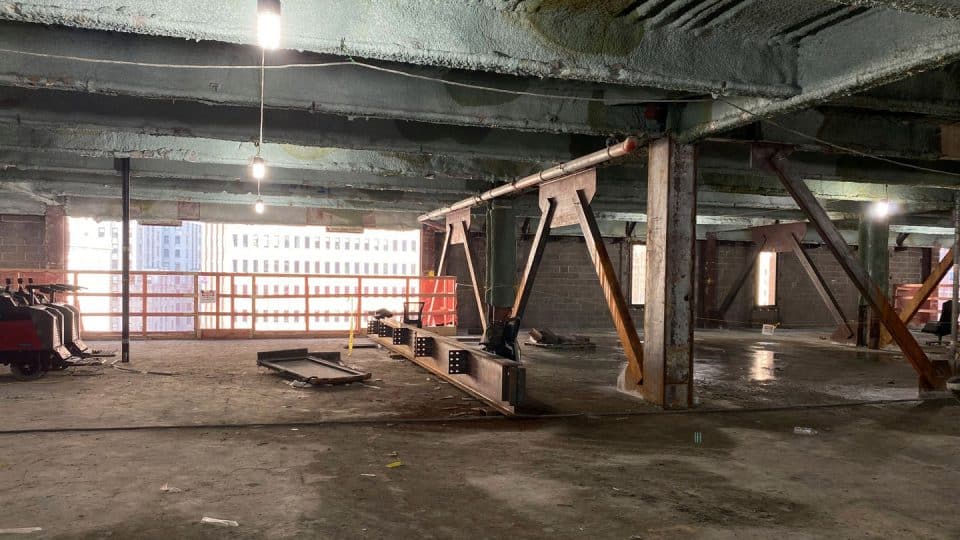
Real-world experience
The data and hypotheticals don’t tell the story of individual property owners who have repurposed office buildings. We surveyed developers and architects in Florida, New York and Texas to learn how they are making office-to-apartment conversions projects work. They have completed or are working on repurposing a wide range of office buildings — from those listed on the National Register of Historic Places to one built in 1972 in downtown Houston that once housed Continental Airlines offices. They’re not all located in downtowns, either. Parkway is developing “Watermark” on the former 70-acre headquarters campus of ConocoPhillips in far West Houston. The mixed-use redevelopment project includes 12 acres of lakes, five apartment buildings, restaurants and a hotel. It still will have offices, “but there’s no longer a need for 1.3 million square feet of offices out here,” said Brad Freels, Parkway’s co-executive chairman.
Conversions are easiest in older, slender, lower-quality and vacated buildings. The presence and placement of mechanical equipment, plumbing, chillers, windows, beams and post-tension slabs are among countless considerations. Each bring fresh problems, some of which you don’t know until construction and engineering teams uncover a structure’s layers. No two are alike. They’re like snowflakes or fingerprints. “Pick your analogy,” Steinwurtzel said.
It turns out it’s not the physical characteristics that really stand in the way of whether these building conversions can work. It comes down to three key factors: price to purchase a building, its level of vacancy, and whether existing zoning and building requirements allow changing a commercial building into residences. “You really have to make it through all these checkboxes to make it go forward,” said Steinwurtzel of GFP.
GFP’s most ambitious conversion — repurposing the massive 25 Water Street tower in New York’s financial district — meets all three requirements. When complete in 2025, it will have more than 1,300 apartments, making it the nation’s largest office-to-housing conversion project. It’s going forward because GFP took advantage of JPMorgan’s desire to get out of a long-term lease and it also agreed to surrender a completely vacant building that previously housed other tenants. Despite these pluses, 25 Water Street has elements that another developer would have walked away from, starting with its sheer size of 1.1 million square feet, which requires GFP to core out two chunks of the dark, deep interiors to create light-filled residences. GFP is making this additional expense pay off, however, by taking advantage of a city regulation that allows developers to build more to compensate for such lost square footage. In this case, GFP is adding 10 floors to the building’s existing 22. GFP also is adding 100,000 square feet of amenities that include indoor and outdoor pools, a gym and spa, social lounge and bowling alley. “We believe people will want to rent these units at higher rents because of the amenities and we think the units will be very desirable,” Steinwurtzel said. “What we’re demonstrating with 25 Water Street — where we have to create two light wells and replace the majority of the façade and create a tower on top — is you really can convert almost any building. That was made possible by the reduced net land price.”
As 25 Water Street indicates, the best conversions, located in premier locations, can command higher rents than apartments in new buildings. Units in the Franklin Tower in Philadelphia are renting at the top of the market because the location, amenity package and ceiling heights are better than any new-build product, said Paynter, whose firm designed the repurposed building.
What’s more, adapting and reusing obsolete office buildings often benefits by being faster, more environmentally friendly and more cost-effective than demolishing and building anew, said Scott Waddington, executive vice president of capital markets for DeBartolo. “If I have an existing structure I’m retrofitting, I can deliver it about 12 to 14 months quicker,” he said. This means generating income and proving a project’s concept sooner — enabling DeBartolo to reach its goal of selling to investors much more quickly. He and others also extolled the environmental benefits of reducing waste since rehabbing and reusing is less carbon-intensive than demolishing and building a new structure. More practical side benefits: no need for convoys of dump trucks to haul off tons of building debris and or to close streets, a particularly thorny issue in dense urban areas.
DeBartolo’s latest completed conversion project is “Elev8” in downtown Houston, a 20-story 458,000-square-foot former office tower it began opening in stages in December. When built out, it will have 372 luxury apartments and amenities that include an indoor pool, fitness studio and covered outdoor plaza. Rents range from $1,800 for a studio to $6,000 for a three-bedroom unit.
Clearly, this and many such redevelopments with relatively pricey rents don’t directly address the riddle cities are trying to crack — providing more housing that is affordable. As researchers have documented, the lion’s share of projects can only add affordable and workforce housing by leveraging public funds and incentives. Recognizing reality, a bevy of cities — from Chicago and Boston to Los Angeles and San Francisco — have rolled out programs and policies in hopes that office-to-residential conversions can juice suffering urban areas. The federal government has gotten in the act with a newly announced program of grants, low-interest loans and tax incentives.
In the end, no one can know whether all the projects, plans and programs to convert obsolete offices will provide a spark needed to revitalize struggling cities. It can’t hurt, though. “This is something that is likely a decadelong process,” Whelan said. “But it’s needed. If we never reinvent then we’re never going to meet the future.”
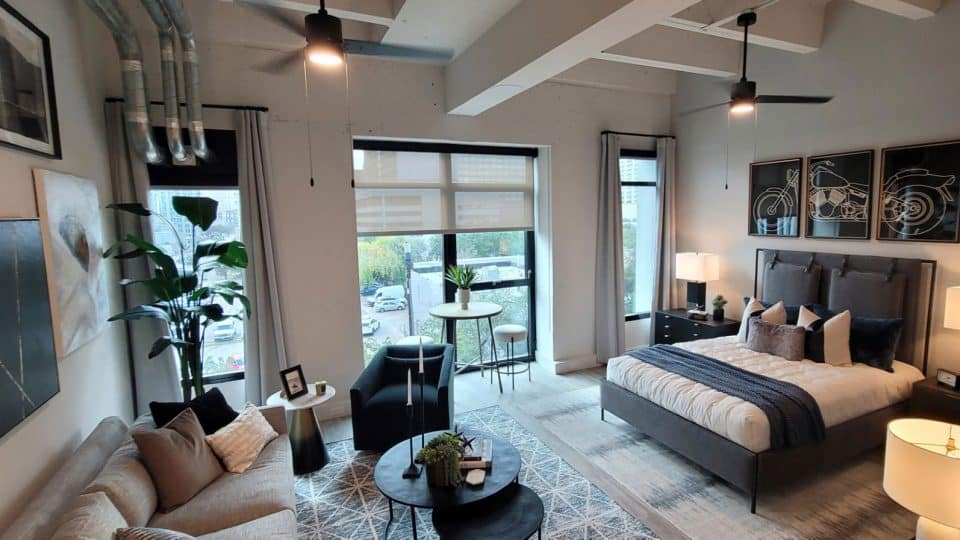
The Barnett id="barnett"
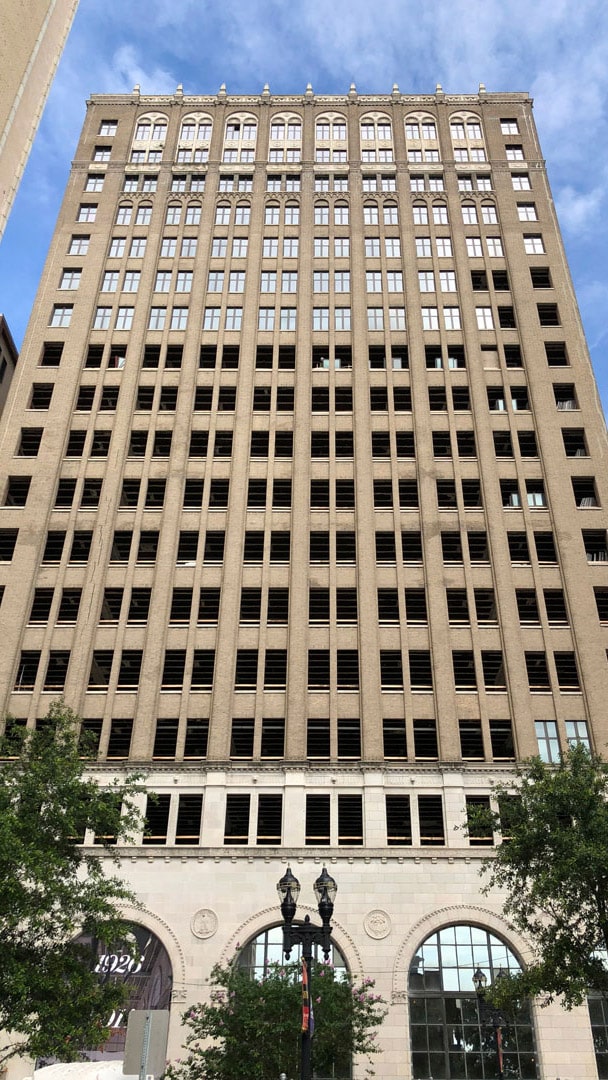
Steve Atkins’ Story reveals the arduous path some developers must travel to bring life an old empty office building. Atkins, managing director of SouthEast Development Group, counts himself among a subcategory of developers who have a passion for adaptive reuse projects. Sometime in 2009, he spotted a long-vacant 18-story tower in downtown Jacksonville that once housed the headquarters of Barnett Bank. Charmed by its large arched windows, stone façade and high ceilings, he envisioned a residential tower. He spent years selling his dream to partners and investors, including Jacksonville Jaguars owner Shad Khan. Eventually, Atkins and a purchasing group bought the building, only to later lose it through foreclosure before regaining it again. The grind paid off in 2019 when The Barnett opened with 107 apartments, including 22 with lower rents reserved for tenants with household incomes 80% of the city’s median. The investors took advantage of government tax credits and a grant for restoring an historic building. The Barnett also houses a Chase bank location, Jacksonville Business Journal’s newsroom and classrooms for the University of North Florida. The apartments have been near fully occupied since opening and average rents have almost doubled. “It’s been very successful,” he said of the $60 million project.
Atkins’ next big deal may stand in the block across the street: three decaying buildings known as the Laura Street Trio that were built in the early 1900s when the city was recovering from the Great Jacksonville Fire of 1901. Nowadays the buildings seem mostly to appeal to homeless people, but Atkins imagines a $171 million mixed-use development with a hotel, apartments and two new towers. Atkins and city officials agreed to a proposal that included profit sharing, forgivable loans and tax breaks, but city council members recently sent it back to a planning agency for fine-tuning after critics said it was too risky. “Unfortunately, this is typical of the process on these large projects,” said Atkins, who remains optimistic. “Politics and agendas always have to be addressed to get to a final agreement. We will get there.”
